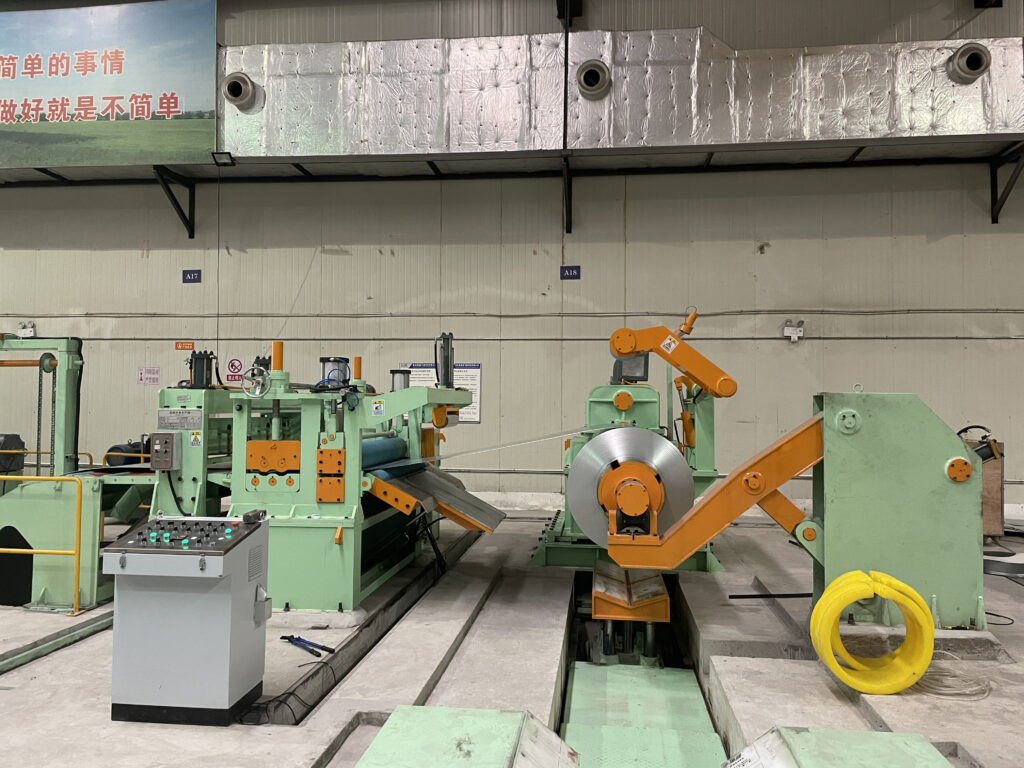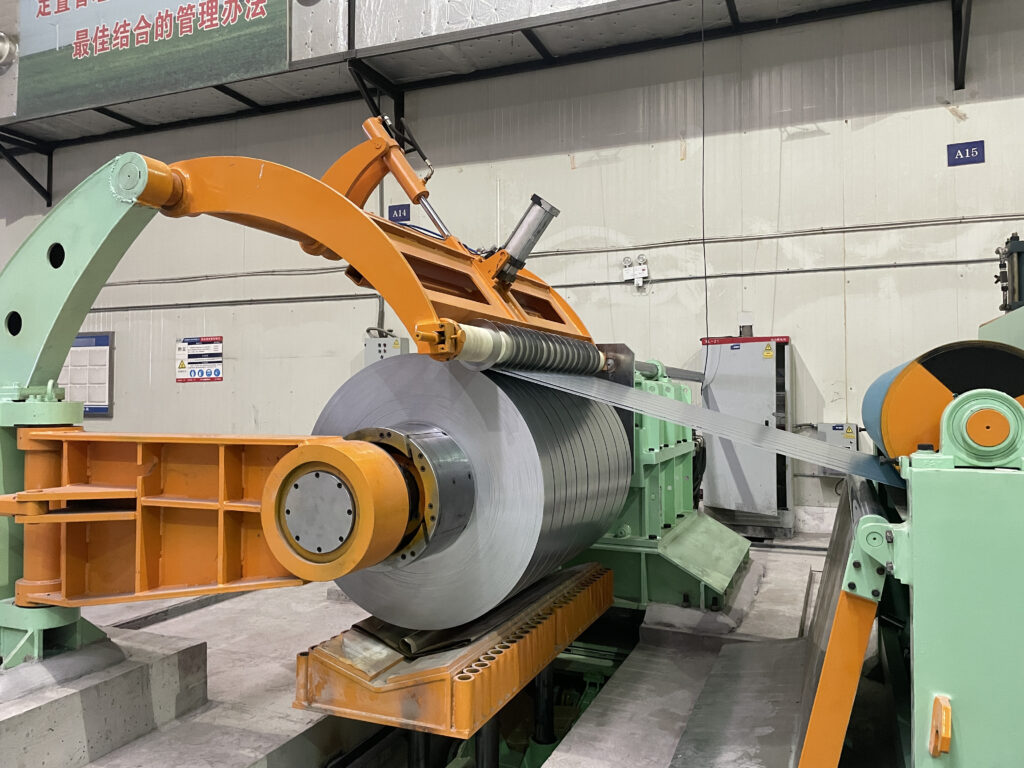Comprehensive Guide to Metal Slitting Machines and Flatbed Machines: Features, Applications, and Buying Tips
Explore MaxdoMachine's expert guide covering metal slitting and flatbed machines. Learn key technical specs, industry applications, precision control, and maintenance tips to choose the right equipment for your metal processing needs.
Metal slitting and flatbed cutting machines remain fundamental to precision metal processing in 2025, driven by advancements in automation, material versatility, and enhanced operational efficiency. MaxdoMachine’s MD series — including the MD-850, MD-1350, MD-1650, and MD-2200 — set industry standards with ±0.1mm cutting accuracy, processing speeds up to 300 meters per minute, and robust CNC-controlled blade alignment systems. These machines combine precision servo tension control and industrial-grade PLC integration to deliver consistent quality across a range of metals, from stainless steel to aluminum alloys, efficiently handling thicknesses from as thin as 0.1mm to heavy-gauge coils exceeding 12mm.
The innovative design emphasizes energy efficiency and automated workflows, including touchscreen PLC interfaces, automatic coil feeding systems, and advanced safety features such as emergency stop systems and real-time fault detection. These capabilities not only minimize material waste but also accelerate return on investment, demonstrated by their successful deployment in high-demand sectors such as HVAC duct manufacturing, automotive panels, and appliance fabrication. This guide offers a detailed examination of these machines’ operational principles, advanced technical specifications, industry compliance standards, practical maintenance protocols, and strategic insights for selecting equipment tailored to specific production needs—reflecting the authoritative expertise and forward-looking innovation distinctive to MaxdoMachine.
What Are Metal Slitting Machines and Flatbed Machines?
Metal slitting machines specialize in converting wide metal coils into narrower strips by employing rotary knives under strict tension control. This slitting process maximizes raw material utilization and prepares strips for subsequent fabrication steps. In contrast, flatbed machines operate on flat metal sheets, employing CNC-controlled cutting and forming tools for producing sheets shaped to industrial requirements, such as automotive panels or appliance components.

Working Principles and Precision Control
Metal Slitting Machines:
Coiled metal enters the machine and passes through rotary slitting blades arranged across the coil width. These blades slit the metal into correctly sized strips. Precision positioning of blades and regulated coil tension are managed by advanced servo motors and automated feedback systems, consistently maintaining slit width tolerance within ±0.02mm. Comprehensive safety mechanisms—including blade guards, sensor interlocks, and emergency stops—comply with ISO 13849 and CE standards.
Flatbed Machines:
Flatbed machines utilize mechanical or hydraulic cutting tools guided by CNC programs along flat stationary bed surfaces. They enable complex sheet metal cutting and forming with precision control of tool paths and depths, achieving consistent and repeatable cutting quality necessary for high-volume manufacturing.
MaxdoMachine MD Series Specifications Comparison
| Model | Working Width (mm) | Thickness Range (mm) | Max Speed (m/min) | Power Consumption (KW) | Weight (T) |
|---|---|---|---|---|---|
| MD-850 | 20-820 | 0.3-3.0 / 1.5-6 / 2-8 / 4-12 | 1-250 | 93-138.5 | 10-35 customizable |
| MD-1350 | 300-1300 | 0.3-3.0 / 1.5-6 / 2-8 / 4-12 | 1-250 | 136-318.5 | 10-35 |
| MD-1650 | 300-1650 | 0.3-3.0 / 1.5-6 / 2-8 / 4-12 | 1-250 | 294.5-422.5 | 10-35 |
| MD-2200 | 300-2150 | 0.3-3.0 / 1.5-6 / 2-8 / 4-12 | 1-250 | 422.5 | 10-35 |
Key Technical Features
- Precision Systems: Cutting-edge servo motors and PLC controllers facilitate high-precision blade positioning and tension adjustment to ensure consistent slit widths.
- Speed and Throughput: Adjustable speed parameters from 1 to 250 m/min enable flexible adaptation for various production volumes.
- Material Compatibility: Machines process an extensive range of metals, including carbon steel, stainless steel, aluminum, and copper.
- Automation & Energy Efficiency: MaxdoMachine integrates intelligent control interfaces, automatic lubrication, and energy-saving drives, significantly reducing operational costs and environmental impact.
Industry Applications and Benefits
These machines serve diverse industries such as automotive, construction, electronics, and household appliances. Metal slitting machines optimize raw material use and streamline coil processing by producing accurate and uniform metal strips. Flatbed machines provide precision cutting and forming essential for final assembly components. Their use enhances operational efficiency, reduces waste, and ensures product consistency, contributing to long-term cost savings and competitive manufacturing advantages.
Installation, Operation, and Maintenance Guide
- Installation: Meticulous alignment and secure electrical and pneumatic connections are essential for accurate operation, following MaxdoMachine’s technical guidelines.
- Operation: Operators utilize user-friendly touchscreen panels to configure slit width, blade positioning, speed, and tension. Real-time monitoring and automated error detection facilitate smooth workflow.
- Maintenance: Periodic blade inspections, lubrication, tension recalibration, and software updates are crucial to maintain peak machine performance and avoid downtime.
- Troubleshooting: Address common issues such as blade wear, material jams, and sensor errors through systematic diagnostics guided by manufacturer protocols.
Safety and Compliance Standards
MaxdoMachine’s equipment adheres to international safety standards, including ISO 13849 for machine safety-related control systems and CE certification. Key safety features encompass emergency stop devices, blade guards, light curtains, and fault detection sensors, ensuring operator protection and regulatory compliance.

Buying Guide and Checklist
- Material and Size Requirements: Confirm the thickness, width, and types of metals to be processed.
- Production Needs: Assess required throughput and machine speed.
- Automation and Maintenance: Evaluate available automation levels and ease of servicing.
- Energy and Safety: Consider machines with energy-saving technologies and verified safety certifications.
- MaxdoMachine MD Series Fit: Match production scale with appropriate MD model specifications, from compact MD-850 to the high-capacity MD-2200.
Carbon steel, stainless steel, aluminum, copper, and specialty alloys within specified thickness ranges.
Typically held within ±0.02mm under proper calibration and maintenance.
Yes, through integrated CNC and PLC controls ensuring operational flexibility.
Compliance with ISO and CE standards, incorporating emergency stops, blade guarding, and sensor interlocks.
Case Study: Boosting Productivity with MD-1650
A major automotive parts manufacturer adopted the MD-1650 to slit high-strength stainless steel coils, achieving a 15% reduction in material waste through precise tension control and blade technology. This integration also boosted production throughput by 20%, driven by advanced automation features such as automatic coil feeding and energy-efficient motors, which optimize operational continuity and reduce downtime. The machine’s enhanced precision control and real-time monitoring ensured consistent product quality, a critical factor for rigorous downstream fabrication processes like stamping and assembly, ultimately demonstrating MaxdoMachine’s commitment to delivering high-performance solutions that increase productivity while reducing operational costs.




